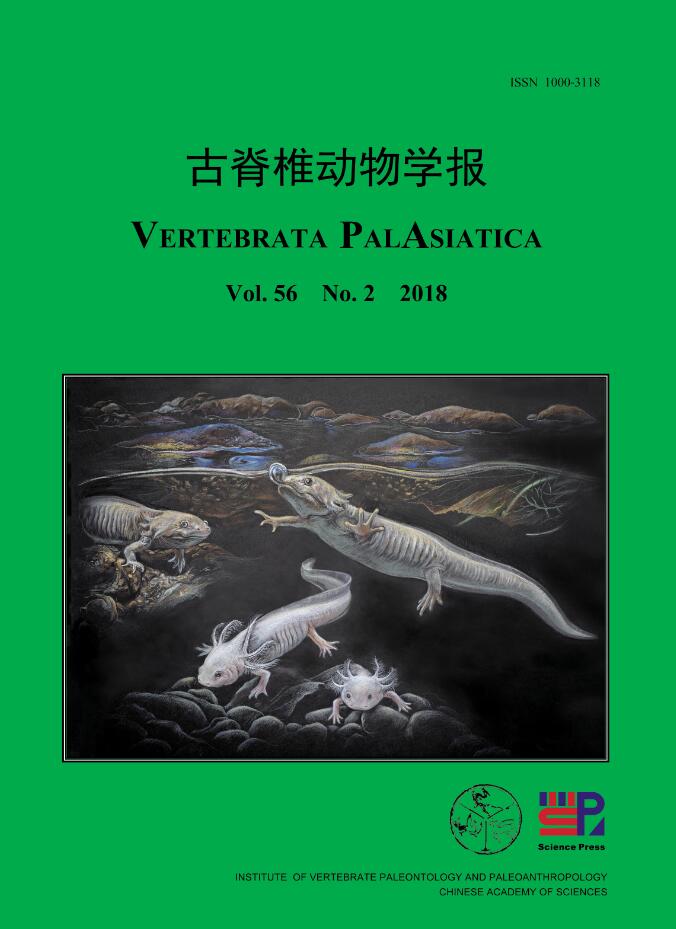

封面说明: 早白垩世围场皇家螈 (Regalerpeton weichangensis) 生态复原图。围场皇家螈以具长尾为特征,其尾长超过吻肛距 ( 从吻端到泄殖腔孔后缘的距离 )。围场皇家螈幼体生活于较深的水域,主要用鳃呼吸,具三对外鳃,每对外鳃密布鳃丝,且具较高的背鳍和尾鳍 ( 图下 )。在向成年转化的过程中,其外鳃和尾鳍逐渐退化,转为用肺呼吸,生活在较浅水域 ( 右上 )。化石记录显示,一些成年围场皇家螈保存了骨化的腕跗骨,表明其四肢具有较强支撑能力 ( 左上 )。围场皇家螈有一个幼态类型的翼骨,它是三射型的并且有游离的、细长弯曲带齿的前中支。另外,成对平行骨化的下鳃骨 I 和 II 仅出现在幼体和幼态持续的蝾螈中,因此它们也被认为是幼型的舌鳃器。成年的围场皇家螈保存了三对外鳃、幼型的翼骨以及舌鳃器,这些特征表明它应是一种幼态持续的蝾螈。详见本期戎钰芬文 (p. 121)。 ( 绘图:郭肖聪 )
Cover image: Ecological reconstruction of the Early Cretaceous Regalerpeton weichangensis. R.weichangensis has a noticeable long tail, longer than the snout-vent length (distance from the anterior tip of the snout to the posterior edge of the cloaca). The larval individuals usually live in deeper waters and breath primarily through gills, having three pairs of external gills with bushy flaments (Bottom). They also have higher dorsal and tail fns. During the metamorphosis, they reduce their external gills and tail fn gradually and, in adulthood, breathe with lungs and live in shallower waters (Upper right). Shown by fossil evidence, ossifed carpals and tarsals in some adult individuals indicate that the limbs are relatively strong to support the body (Upper left). The pterygoid displays a larval confguration. It is triradiate, with a dentate vimineous and curving anteromedial process which is free. In addition, paired ossifed hypobranchial I and II paralleled to each other only occur in larval and neotenic salamanders and are considered larval hyobranchium. Combining with external gills, larval pterygoids and hyobranchium preserved in the adult individuals, it is concluded that R. weichangensis should represent a neotenic form. See details in the paper of Rong (p. 121). (Illustrated by GUO Xiao-Cong)